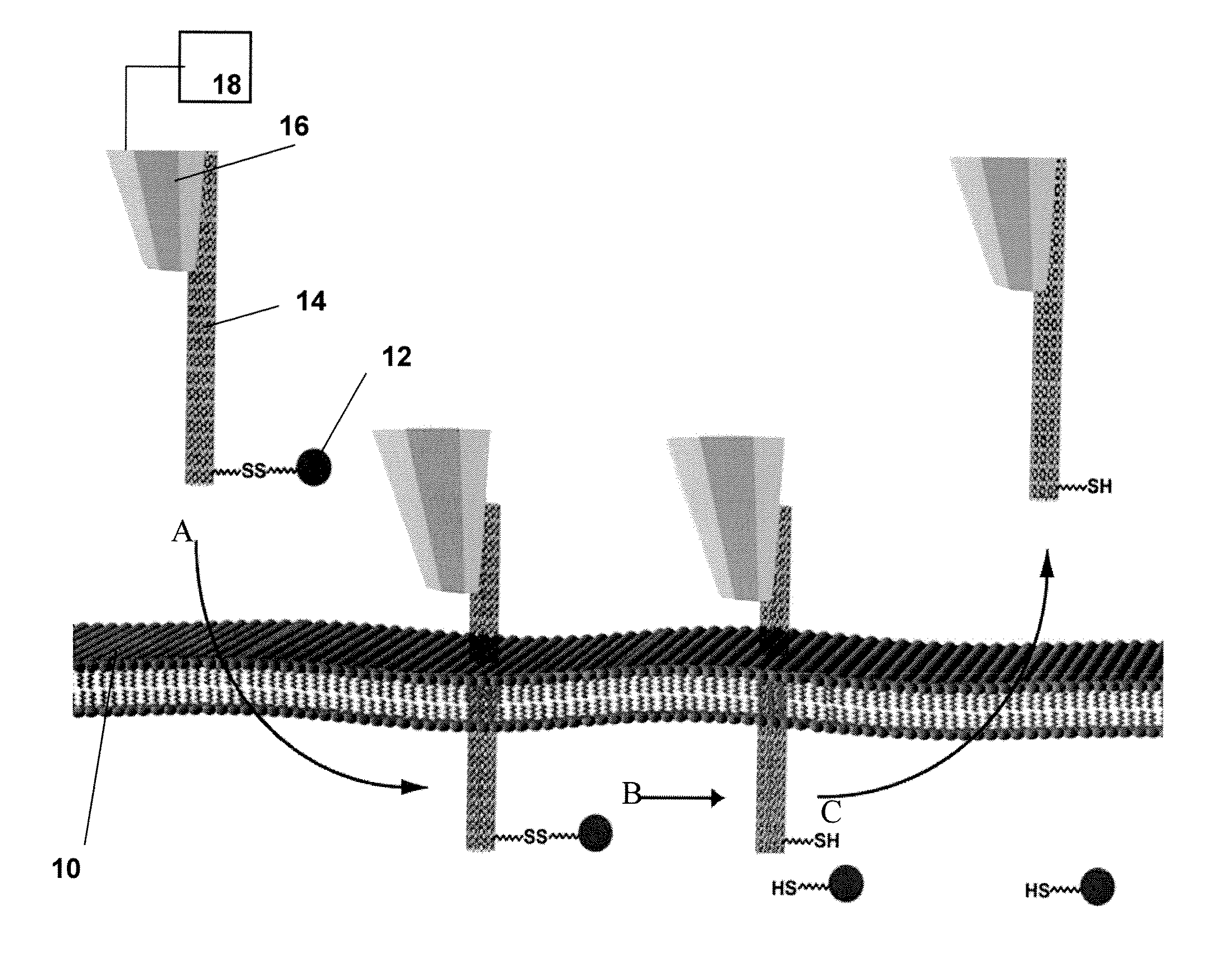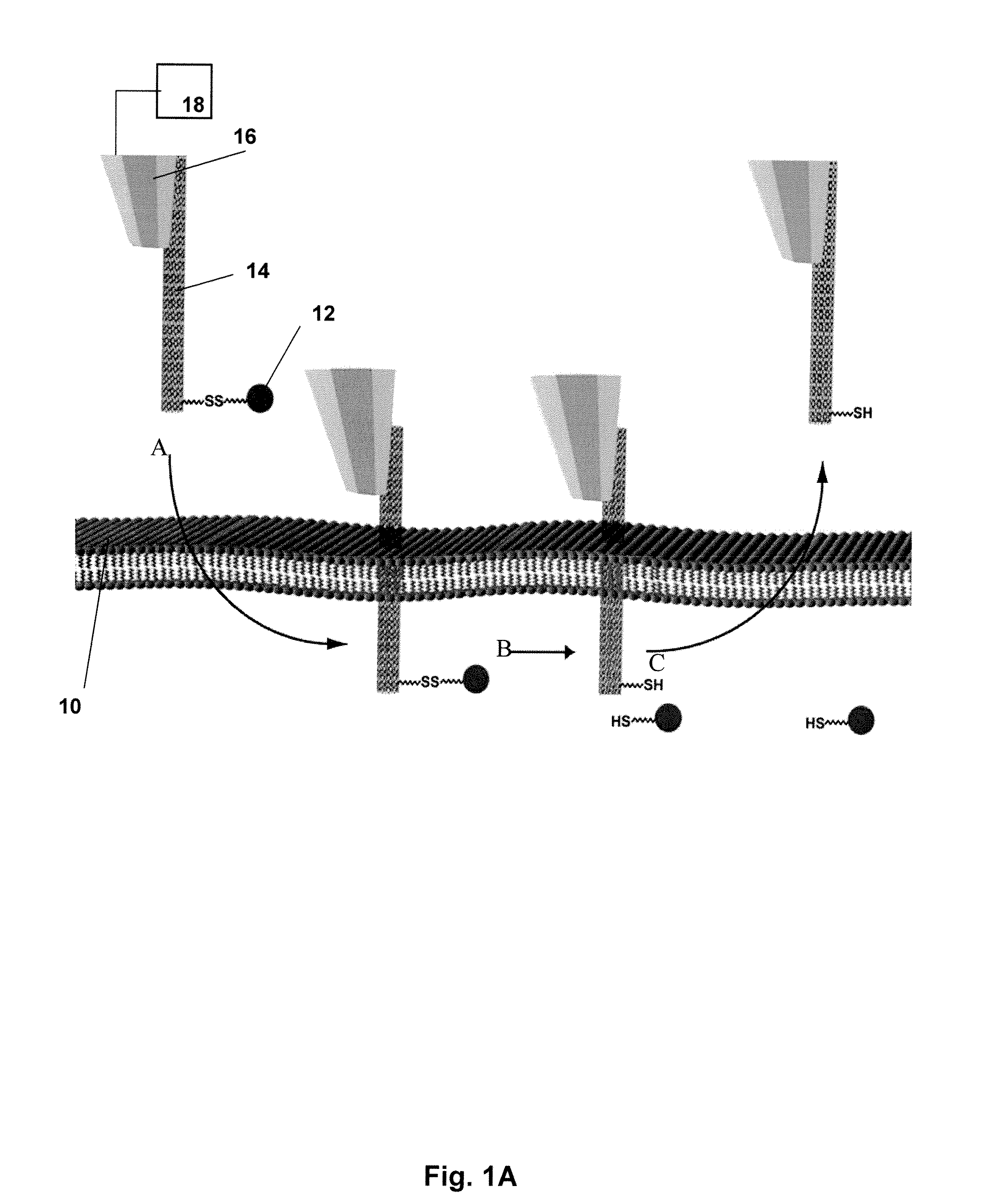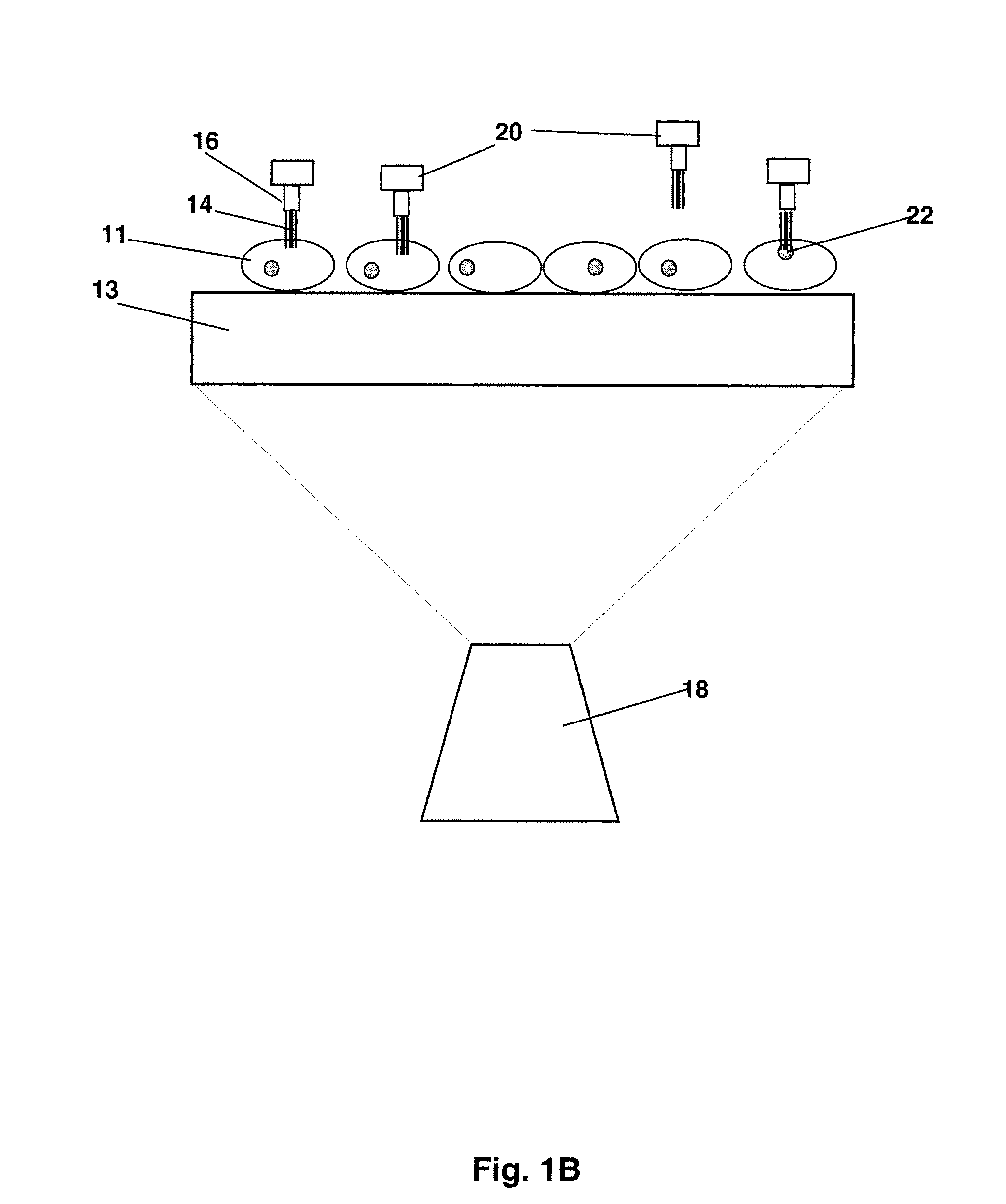Intracellular Molecular Delivery Based On Nanostructure Injectors
a nano-structure, intracellular technology, applied in the field of microinjection for introducing a substance, can solve the problems of damage effect, cell types are usually limited to larger cells with tough membranes, etc., and achieve the effect of high affinity
- Summary
- Abstract
- Description
- Claims
- Application Information
AI Technical Summary
Benefits of technology
Problems solved by technology
Method used
Image
Examples
example 1
Construction of A Nanomanipulation System
[0085]The nanomanipulation system (XYZ manipulator with imaging) was built based on a commercially available AFM (MFP-3D-BIO™, Asylum Research, Santa Barbara, Calif.) that integrates an inverted fluorescence microscope (Nikon TE2000). Recent biological applications of atomic force microscopy (14) have provided information on the integrity and local mechanical properties of cell membranes (4, 15-17). The spatial control mechanism of AFM piezo devices ensures the control of nanoneedle displacement at nanometer scale resolution. The sensitivity and ability to apply and monitor forces on a cell makes the AFM perfect nanomanipulator for penetration and withdraw of nanoneedles in this cell nanoinjection system (FIGS. 1B and C). The fabrication of CNT-AFM tips was carried out in an FEI Sirion XL 30 SEM, equipped with a homemade manipulator. The procedure was described in detail in a previous publication [Nanotechnology 16, 2493 (2005)].
[0086]In brie...
example 2
Attaching Nanoinjector To Microscopic Tip
[0087]To manipulate CNT nanoneedles, we first attached them at one end to AFM tips. Several methods have been reported for attaching CNTs to AFM tips (18-20). The CNT-AFM tips used in this work were fabricated as described previously (20). In brief, an individual MWCNT was retrieved from a metal foil by the AFM tip using a nanomanipulator inside a scanning electron microscope (SEM). As described in Ref. 20, multiwalled CNTs were prepared by the standard arc-discharge technique. After purification, a 10 μl ethanol suspension of CNTs was deposited between two metallic electrodes placed on a clean glass microscope slide, separated by a 400 μm gap. CNTs were aligned on the edge of the electrodes when a 70 V-1 kHz AC signal was applied across the gap. The metallic electrode with the CNTs was then mounted inside the SEM on the nanomanipulator with the CNTs positioned perpendicular to the plane of the AFM cantilever. SEM imaging allows us to control...
example 3
Synthesis of Linker And Attachment of A Protein
[0090]For the controlled loading and release of cargo, we aimed to design a system that would obviate the need for a carrier solvent and, accordingly, the addition of excess volume to the cell's cytosol during the injection process. Toward this end, we exploited established chemical methods for CNT surface modification and the intrinsic difference in redox potential between the intracellular and extracellular environments. Compound 1 (FIG. 3) fulfilled the functions of cargo loading and release as follows. Its pyrene moiety binds strongly to CNT surfaces via π-π stacking (12). Compound 1 is also endowed with a biotin moiety, separated from the pyrene group via a disulfide bond. In the relatively oxidizing environment of the cell's exterior, the disulfide is stable. However, once exposed to the reducing environment of the cytosol, the disulfide is cleaved, liberating attached cargo. The kinetics of disulfide bond cleavage within mammalia...
PUM
| Property | Measurement | Unit |
|---|---|---|
| Electric potential / voltage | aaaaa | aaaaa |
| Electrostatic force | aaaaa | aaaaa |
Abstract
Description
Claims
Application Information
 Login to View More
Login to View More - R&D
- Intellectual Property
- Life Sciences
- Materials
- Tech Scout
- Unparalleled Data Quality
- Higher Quality Content
- 60% Fewer Hallucinations
Browse by: Latest US Patents, China's latest patents, Technical Efficacy Thesaurus, Application Domain, Technology Topic, Popular Technical Reports.
© 2025 PatSnap. All rights reserved.Legal|Privacy policy|Modern Slavery Act Transparency Statement|Sitemap|About US| Contact US: help@patsnap.com



